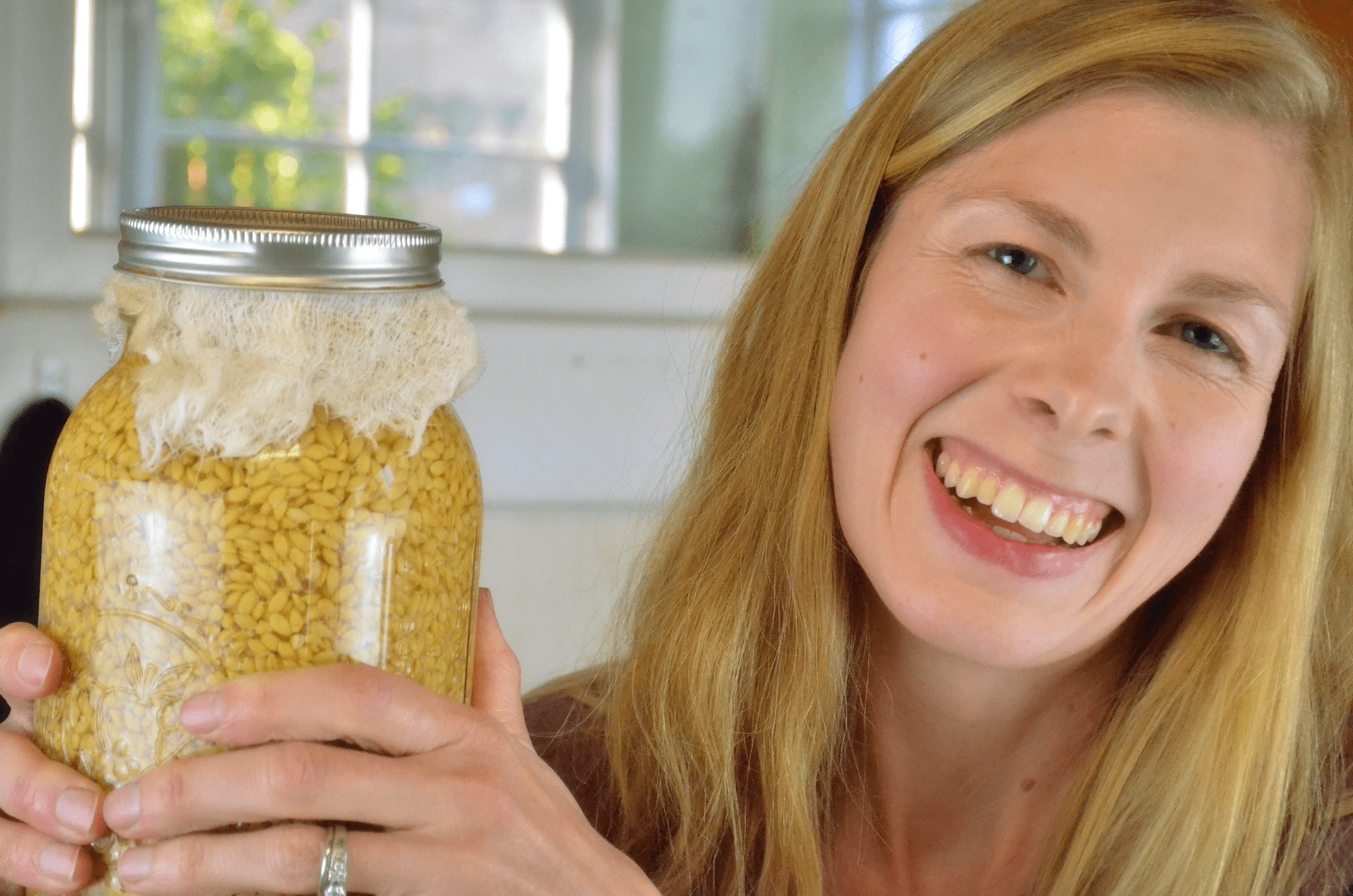A Simple Way to Increase Einkorn’s Nutrition
This fast paced world is becoming more and more convenient for the moment. Unfortunately it can be less helpful for the future. There is a way our ancestors used to prepare grains that helped to unlock their nutritional potential. Sprouting einkorn is simple yet overlooked. A few minutes can change the way your body receives grain. Today I want to show you the simplicity of sprouting this grain and how to increase einkorn’s nutrition.
Why Sprout Grain
As opposed to common thought, grains are actually not a simple foods to digest. Recently more and more people have acquired health problems from grains such as wheat. Celiac disease and intolerance to gluten has become a common topic. I’ve mentioned before that our wheat has been hybridized over and over, changing the chemistry of this food. See more on that HERE. Einkorn is the oldest form of wheat we have today that has not been hybridized. It’s also a much more easily digested form of wheat.

But why sprout einkorn, especially if it’s more easily digested? Honestly, einkorn is probably the last grain you’d need to sprout because it has the least amount of phytic acid and is quite high in protein. It’s a powerhouse! BUT, sprouting can make those nutrients even more readily available.
Have you heard of phytic acid? Phytic acid in grains and seeds binds up many of the nutrients (up to 80 percent of magnesium and iron according to this article) including calcium, copper and zinc. The best way to kill off the phytic acid is through soaking/ sprouting or fermenting such as in sourdough. Sprouting also increases the crude protein content of the grain, making more of the fiber that your gut needs to stay healthy. It predigests gluten, making it easier to digest.
Sprouting is Not New
Sprouting may be looked at as a hippy activity in our time but it wasn’t always like this. People used to understand that grains NEEDED preparation before they were baked or cooked. All around the world, history shows that fermenting or sprouting goes back thousands of years. Sourdough was an everyday part of cooking for the pioneers. Sally Fallon and Mary E. Enig; PHD, explain it like this:
In India, rice and lentils are fermented for at least two days before they are prepared as idli and dosas; in Africa the natives soak coarsely ground corn overnight before adding it to soups and stews and they ferment corn or millet for several days to produce a sour porridge called ogi; a similar dish made from oats was traditional among the Welsh; in some Oriental and Latin American countries rice receives a long fermentation before it is prepared; Ethiopians make their distinctive injera bread by fermenting a grain called teff for several days; Mexican corn cakes, called pozol, are fermented for several days and for as long as two weeks in banana leaves; before the introduction of commercial brewers yeast, Europeans made slow-rise breads from fermented starters; in America the pioneers were famous for their sourdough breads, pancakes and biscuits;
https://www.westonaprice.org/health-topics/food-features/be-kind-to-your-grains-and-your-grains-will-be-kind-to-you/
Even looking back thousands of year, grain was thought to have been stored in damp conditions, causing it to sprout before it would be ground to flour. It wasn’t until the 20th century that this art to prepare grains seemed to disappear.
How to Sprout Grains the Simple Way
- Fill a quart size or double quart size canning jar about 2/3 full with einkorn grain (can also use other grains or seeds!).
- Cover completely with distilled water up to 1/2 inch before top of jar.
- Cover opening at the top with a cheese cloth and then screw on a canning lid to hold edges of cheese cloth down. You can also cut an old window screen to size and then screw on a canning lid. This allows for airflow.
- Let sit on counter for approximately 24-48 hours, then drain the water and spread out to dry in a dehydrator.
Notes
Letting the grain sit in water for too many days will actually decrease the nutrition. Do not let it sit more than 48 hours.
Check for little sprouts at the end of your grain! They may be hard to see.
Add more water if necessary to keep grains covered and switch out water every 24 hours.
There it is folks! Pour, sit and dehydrate. That’s it!

More Einkorn Recipes
Simple Einkorn Lemon Blueberry Sourdough Scones
How to Make a Wholegrain Rustic Boule with Einkorn
My Favorite Farmhouse Buttermilk Biscuits
Chewy Einkorn Chocolate Chip Cookies
Let me know if you sprout your grains or einkorn in particular.
From the Hilltop,







